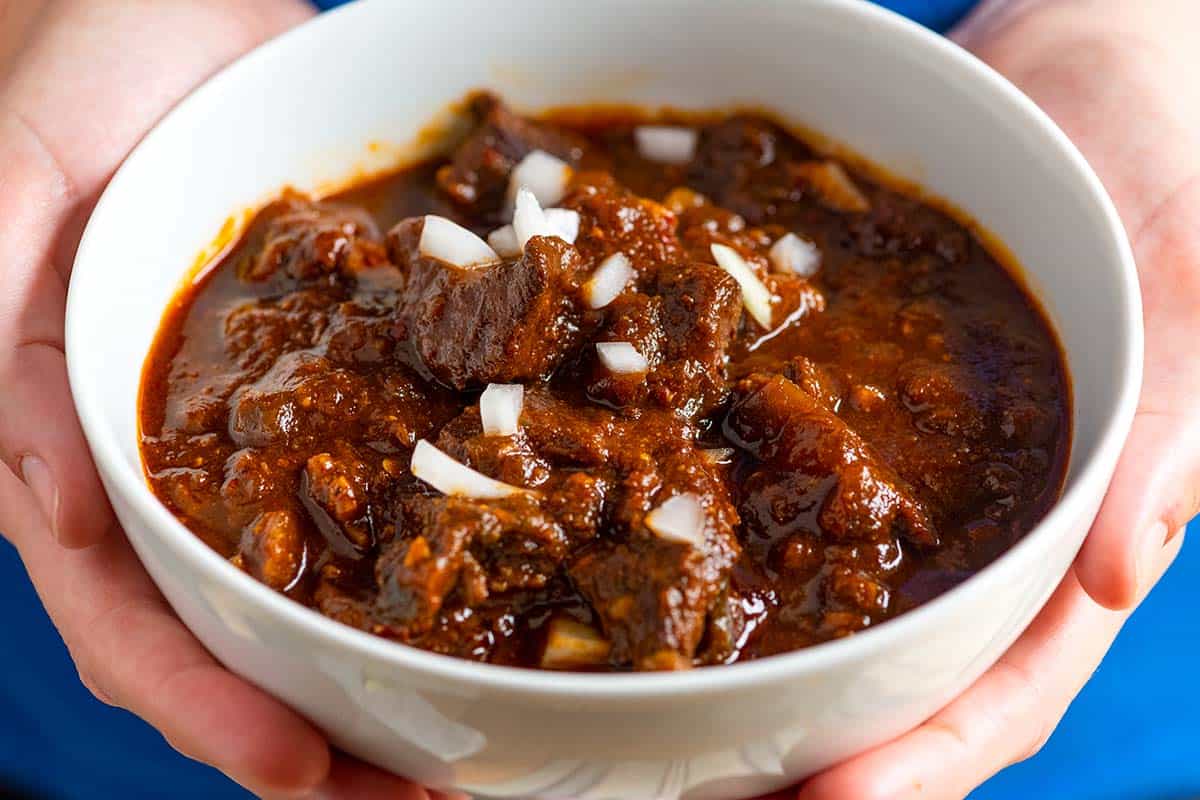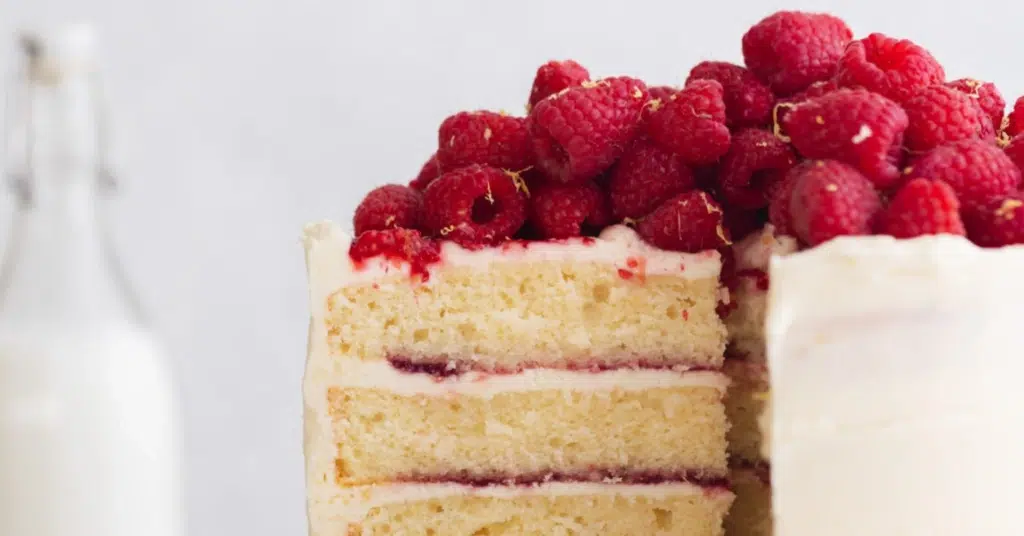Growing up, Jing Wen Ng’s grandmother always brought rolls of haw flakes when visiting her family’s home in Singapore. The Chinese candy was distinct, with vibrant magenta paper wrappers encasing a small cylindrical stack of discs resembling miniature Chinese firecrackers. But inside were dried coins of sweetened hawthorn berry puree, flattened to roughly the size of nickels. The candy was cheap and ubiquitous throughout Singapore—and much of East Asia—Ng recalls. But she didn’t care much for them as a child, finding them too sour and too dry.
Now, as the sous chef at Nōksu, a tasting-menu restaurant in New York City, Ng nods to the treat in a dessert course of haw flake–flavored granita pressed into a telltale disc. The icy homage sits atop pistachio custard, huckleberry sorbet, and chrysanthemum syrup, flanked by a pool of chrysanthemum foam. Do some diners get the reference? I ask her.
“They usually make an instant connection to the nostalgia of eating the haw flake candy,” says Ng.
Haw flakes have been a mainstay of Chinese candy aisles for several decades; the retro paper packaging often features a small white logo in English for one of two brands: Sunflower or 3 Flowers Brand. Other brands that manufacture a strikingly similar product might instead call them haw cakes or haw chips, and they might come in airtight plastic pouches nowadays—but however they’re sold, these coin-shaped, pressed hawthorn berry candies are as much of a presence for today’s youngsters as they have been for generations.
Haw flakes have been a mainstay of Chinese candy aisles for several decades
And many Asian American chefs are playing up that nostalgia by incorporating hawthorn berry in desserts like ice cream and sweetened tea, often delighting diners with a taste of childhood. The connection is palpable not only from appearance but from flavor. Haw flakes are derived from the tangy dried hawthorn berry, which is perhaps just as memorable as the candy’s iconic shape and packaging. Encountering the product in a wholly revamped setting—such as the dessert at Nōksu—is the type of experience that can inspire Anton Ego–esque flashbacks for an unsuspecting Asian American.
In my own black-and-white montage, I’m running through the candy and junk-food aisle of the Asian supermarket with my brother as we try to collectively choose the one and only treat that our wary mother will allow us to add to our cart. Our eyes scan the packages of thumbnail-size hamburger cookies, the plastic cups of lychee jellies, the crepe straws with pale-pink strawberry goo solidified inside. We’d had haw flakes countless times before. Peeling back the paper and popping the discs apart—and trying to unstick those that were stuck—was half the fun. And the flavor, somewhere between apple and berry and Fruit Roll-Ups, was hard to resist. My brother could read aloud the two English words on the package before I could. But what exactly were haw flakes? we wondered. What was haw?
“It’s not a berry; it’s more like a red apple that’s a bit tart, with red skin,” says Fuchsia Dunlop, author of several Chinese cookbooks and the cultural history book Invitation to a Banquet: The Story of Chinese Food, on a recent phone call.
The fruit, which is formally known as Crataegus and also goes by “hawberry” and “hawthorn apple,” grows wild around the world, but it is most commonly associated with the cuisine of Northern China, where tanghulu—a stick of candied hawthorn berries—is a popular street food, often sold by vendors on bicycles. While you might see tanghulu all over TikTok today, it’s actually a time-honored treat that has been around for generations: “When people talk about old Beijing street food, this is one of the things they talk about,” says Dunlop.
However, she isn’t sure when and where hawthorn berries were first sold as candied “flakes,” or which brand might have first made them. Dunlop recalls a shop in Beijing that sells various confections made from hawthorn berry—some of them resembling the Spanish membrillo, or quince paste, and others resembling fruit leather. Much like quince, the fruits are typically processed and sweetened rather than eaten raw; they can also be stewed in their own syrup and enjoyed as a refreshing, tart-sweet dish, says Dunlop.
Hawthorn berry is also traditionally consumed for its medicinal properties. In a recent post for her 120,000 Instagram followers, the nutritionist and author of The Five Elements Cookbook Zoey Xinyi Gong shares a rundown of hawthorn berry’s Traditional Chinese Medicinal benefits: it’s known to aid digestion and boost heart health by lowering blood pressure.
While you might see tanghulu all over TikTok today, it’s actually a time-honored treat that has been around for generations
When it comes to candied hawthorn berry, Gong advises looking for versions that have no ingredients beyond hawthorn berry and sugar, as many brands contain food coloring and other additives. Still, the classic paper-wrapped haw flakes have held a special place in her heart since she was a toddler: “I loved it because my grandma said it’s healthier than other candies,” Gong shared over email.
Grandparents were also the catalyst for Christine Gallary’s first memories of haw flakes. The Oakland-based recipe developer remembers her grandmother buying them for her in Oakland’s Chinatown and keeping them around her home. “I loved peeling them apart and remember being mad if they stuck together,” says Gallary.
Recalling the tactile experience of enjoying haw flakes herself, Gallary has put them to use with her own daughter at Disneyland: “How do I keep a toddler amused when we’re standing in line?” she wondered. Then it came to her: Give her a roll of haw flakes.
Last year, Gallary collaborated with chef Brandon Jew to develop a haw flakes–inspired drink for the menu of his Chinese takeout restaurant Mamahuhu. “We were going for nostalgia—things we grew up with like Vitasoy and Ovaltine, and haw flakes was one of them,” she says. The resulting hawthorn hibiscus tea nods to haw flakes nostalgia but is made with dried hawthorn berries, which are steeped with hibiscus and rooibos for a vivid red brew that’s floral, tart, and caffeine-free.
Dried hawthorn berries can also be steeped alone and served either hot or chilled as a refreshing herbal tea. Kaitlin Leung shared a recipe for it on her family’s blog, The Woks of Life. The ingredients are simply dried hawthorn berries, water, and sugar.
Leung says that her father, Bill, is the biggest haw flakes fan of the family; she prefers fruit leathers made from hawthorn berry to the drier stack of coins. But whatever form it takes, the flavor of hawthorn berry has left an unmistakable taste imprint.
“The flavor is so unique…something like the earthiness of a cherry mixed with the tang of a strawberry and the undertone of apple. It very low-key rocked my world,” says Leung of her first memories of the fruit.
“If you’re a Chinese kid, it’s just part of the culture,” says Dan Chan, a Bay Area–based magician and avid home cook. One dessert that he’s made for friends is haw flakes–flavored ice cream. He blitzes the flakes in a food processor to a fine dust and uses it as a replacement for sugar in the ice cream base.
Those looking for dried, unsweetened hawthorn berries can find a number of brands available in the United States; however, due to the risk of hosting pests, the USDA currently restricts the import of fresh hawthorn berries.
Henry Yuan has been importing organic hawthorn berries grown on northern Chinese farms since 2013, and he sells both dried hawthorn berries and many confections made with them through his brand, Big Green. The only ingredients in the hawthorn berry “chip” candies from his brand are hawthorn berries, sugar, and red rice powder for color.
“You can tell the difference when we use sugar only instead of other sweeteners,” says Yuan.
Yuan is a big believer in the health benefits of hawthorn berries; he has even coauthored research for the University of Nebraska–Lincoln, his alma mater, that suggests the high level of dietary fiber in hawthorn berries can aid digestion. Since doing so, he’s been on a mission to promote the berries around the world, by reaching out to chefs like Brandon Jew, whom he currently supplies with dried hawthorn berries, and by adding more SKUs to his product line, like freeze-dried hawthorn berries. Yuan says he’s seen a steady rise in sales for hawthorn berry products.
In recent years, he says, people have been using hawthorn berry as a nutritional supplement, divorced from its cultural context. It can be found in generic bottles in the long vitamin aisles of grocery stores, concentrated in flavorless caplets. That’s a shame, though, because there’s such a rich heritage around eating the fruit. And the many ways one can enjoy hawthorn berries only seems to be growing—just like our appetite for it.









